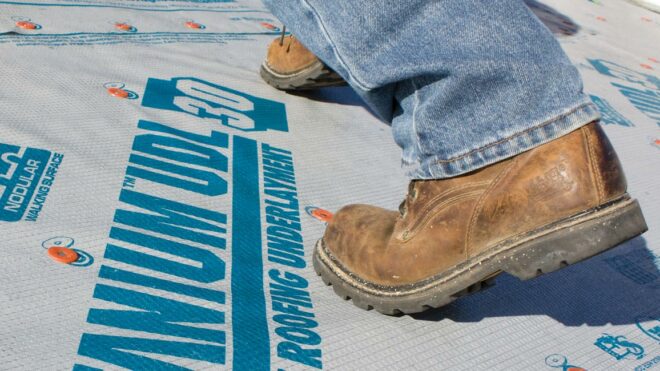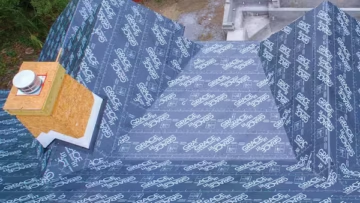The roof over your head is more than just a structural element. It’s the first line of defense against the elements that threaten to invade your peaceful abode. That’s where roofing underlayment comes in, acting as a protective shield between your roof deck and the exterior. Its main job is to keep water out of your roof and keep unwanted moisture out that could cause problems inside your home. But with so many options available, choosing the right type of underlayment can take time. The two leading contenders are synthetic and felt, and we’ll delve into the pros and cons of each to help you make a sound decision.
What Exactly Is Roofing Underlayment?
Roofing underlayment is a substance that goes beneath the roofing layer. It is intended to give an additional layer of protection for your roof. It can assist in preventing leaks, defend against wind damage, and act as a moisture barrier. Roofing underlayment is often constructed of felt or synthetic material.
Roofing Underlayment Types
Two candidates have been at odds for decades regarding roofing underlayment: felt and synthetic. Felt, a tried-and-true traditional material, has long been preferred for many roofing jobs. It combines asphalt and felted fibers, providing a dependable barrier between your roof and the weather. Two weights of felt roofing underlayment are available: 15 lb and 30 lb. The former is lighter and less expensive, while the latter is a thicker and more sturdy variant.
Felt Roofing Underlayment
Felt roofing underlayment is a relic of the past, having been around for ages. This old-school material is crafted by drenching paper or fiberglass mat in a layer of asphalt, creating a formidable layer of defense for your roof. Felt roofing underlayment usually comes in two variants: No.15 felt and No.30 felt. The latter is thicker and tougher than its No.15 counterpart, making it less susceptible to ripping or tearing during installation or inclement weather conditions.
Pros:
One of the primary advantages of felt roofing underlayment over synthetic underlayment is its lower cost. As a result, it is a popular choice among cost-conscious homeowners. Felt is extremely simple to install, and many contractors have experience. Because it can be hammered down without splitting, felt is also a good choice for usage in cold areas.
Cons:
One of the most significant drawbacks of felt roofing underlayment is that it is less long-lasting than synthetic. Felt is readily torn or ripped, which can cause leakage and other issues. Felt is also prone to moisture damage, mold growth, and other problems.
Synthetic Roofing Underlayment
In recent years, synthetic roofing underlayment has become an increasingly popular option. Common synthetic materials used in its construction include fiberglass and polyester. Synthetic underlayment is more durable than felt underlayment and comes in various thicknesses.
Pros:
Synthetic roofing underlayment lasts longer than felt underlayment, which is one of its primary benefits. Synthetic underlayment is less likely to tear or rip, protecting against leaks and other issues. Mold and other problems can be avoided thanks to its resistance to moisture damage. A large variety of synthetic underlayment thicknesses means that homeowners can find the perfect fit for their roof’s needs.
Cons:
Synthetic roofing underlayment is more expensive than felt underlayment, which is one of its main drawbacks. Homeowners on a restricted budget may find this alternative less appealing. The labor expenses associated with installing synthetic underlayment will be higher than those associated with felt underlayment.
The Right Underlayment for Your Roof
Selecting the ideal roofing underlayment isn’t a walk in the park. It’s a decision that depends on an intricate web of factors, such as your financial wherewithal, the atmospheric conditions in your locality, and the level of protection you require. If your purse strings are tight, and your environment is comparatively tranquil, then felt roofing underlayment might be your knight in shining armor. However, if you’re situated in an area that’s prone to vicious weather patterns, such as relentless downpours or fierce winds, then synthetic roofing underlayment is a more potent weapon in the battle to shield your roof from the elements.
The kind of roofing material you intend to use is another factor to think about. Metal and tile roofs, for example, would call for a special underlayment. To find the appropriate underlayment for your roof, go to your roofing contractor or manufacturer.
The setup procedure should also be thought of. Felt roofing underlayment may be less difficult to install, but synthetic underlayment may last longer and prevent leaks better. Consider the long-term benefits of synthetic vs. the short-term s



